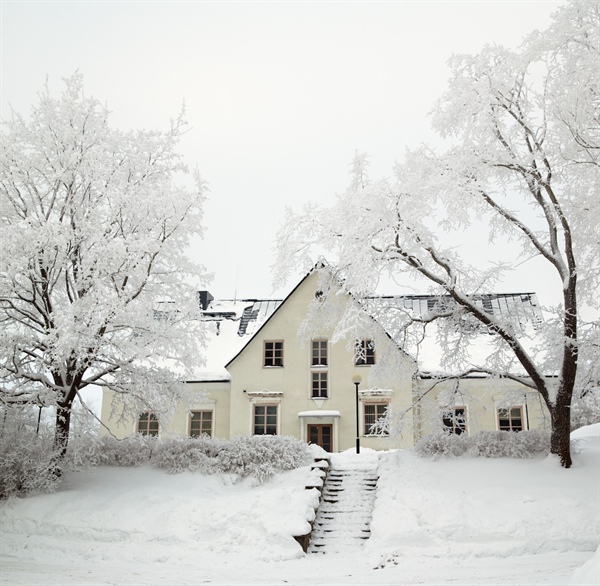Winter Siding Damage: Signs and Solutions from Twin Cities General Contracting

Winter storms can pose numerous challenges to your home's exterior, especially the siding. Whether your siding is vinyl, wood, or metal, each material has specific weaknesses in the face of severe winter weather.
As the colder months approach, it’s essential to be aware of early signs of damage so you can take prompt action to safeguard your home's structural integrity and aesthetic appeal.
Our experienced team examines common types of siding damage caused by winter storms, equipping homeowners with the knowledge to identify potential problems before they worsen.
As siding specialists, we offer valuable insights and guidance on tackling these winter challenges, ensuring your home remains secure and attractive throughout the season.
Detecting Cracks in Vinyl Siding Post-Snowstorm
After a harsh winter storm, it's vital to inspect your vinyl siding for any signs of damage. Cracks are often the most common issue and can be detected by a thorough visual inspection.
Look for any splits or breaches, especially where the siding panels overlap or at corners where exposure to wind and ice is most severe. Using a flashlight can help identify smaller cracks that might be missed in ambient light.
Another effective method is to gently press the siding with your hand. Damaged areas may have lost their rigidity and feel softer than the undamaged sections.
It’s also wise to check for discoloration or fading around the cracks, which can indicate where moisture may have begun to penetrate the siding, exacerbating the damage.
Consulting with vinyl siding experts can provide peace of mind for homeowners worried about potential hidden damage through professional assessments and advice on necessary repairs or replacement.
Identifying Moisture Damage on Wood Siding
Wood siding is susceptible to moisture damage, particularly after winter storms involving snow, sleet, and freezing rain. Visible signs include swelling of the wood panels, soft spots that might feel spongy when pressed, and peeling or chipping paint.
These symptoms suggest that water has infiltrated the siding and may be causing decay.
Mold and mildew presence is another critical indicator of moisture problems. These can appear as black, green, or white patches that stand out against the natural wood color.
In severe cases, wood siding may also begin to warp or pull away from the house, creating gaps that exacerbate the moisture issue.
If you notice any of these signs, it is essential to address them promptly. Delaying repairs can lead to more significant structural damage and potentially higher repair costs.
Spotting Frost Damage on Metal Siding
Metal siding can withstand a lot of environmental stress but is not invulnerable to the effects of frost and extreme cold. Frost damage typically manifests as a series of tiny, superficial cracks across the surface of the metal.
These may not compromise the structural integrity immediately but can lead to rusting if moisture penetrates the cracks.
Another sign of frost damage in metal siding is the delamination of paint or protective coatings. This peeling effect can expose the underlying metal to further damage from moisture and salt, especially if located in snowy environments where roads are salted.
Regular inspections during and after the winter season are crucial to catch these issues early. Removing ice and snow accumulations regularly can prevent further deterioration if damage is found.
Deciding When to Contact a Contractor for Winter Siding Repairs
If you observe any of the signs of siding damage described previously, it’s advisable to contact a contractor as soon as possible. Winter conditions can exacerbate existing issues, leading to more extensive and expensive repairs. A professional can assess the extent of the damage and determine whether repairs or a full replacement are necessary.
For significant damage, such as large cracks, holes, or areas where the siding has become detached from the home, immediate professional intervention is crucial to prevent moisture intrusion and potential damage to the interior of your home.
Even if the damage appears minor, a consultation with a siding expert can help ensure that all potential problems are addressed before they worsen over the remainder of the winter season.
Understanding the Impact of Temperature Fluctuations on Siding
Temperature fluctuations, particularly those common in winter when the temperature may shift dramatically between day and night, can cause significant stress on siding materials. Vinyl and wood siding can expand and contract with temperature changes, which may lead to warping, cracking, or splitting over time.
While generally more resistant to temperature changes, metal siding can still experience issues if the expansion and contraction are not adequately accounted for during installation. This can lead to buckling and misalignment of the panels.
Preventive maintenance and selecting siding materials suited to your climate can help mitigate these issues. Regular inspections and prompt repairs are also essential to maintaining the integrity of your siding against the harsh winter conditions.
How Twin Cities General Contracting Can Help Protect Your Siding
At Twin Cities General Contracting, we understand the challenges that winter weather poses to your home’s siding. Our team of experienced professionals is equipped to assess and repair any damage caused by snow, ice, or temperature fluctuations, ensuring that your home remains safe and visually appealing.
Whether you're dealing with cracks in vinyl, moisture damage in wood, or frost effects on metal siding, we have the expertise to provide effective solutions tailored to your needs.
We offer comprehensive inspections to identify potential problems before they become major, saving you time and money in the long run.
Our repair services are designed to address immediate damage, while our maintenance solutions help prevent future problems, ensuring the longevity and durability of your siding.
If you're noticing signs of siding damage this winter, don't wait for the problem to worsen. Contact us today to schedule a consultation and learn how we can help you maintain the integrity and beauty of your home's exterior.
Let Twin Cities General Contracting be your partner in home maintenance and repair.